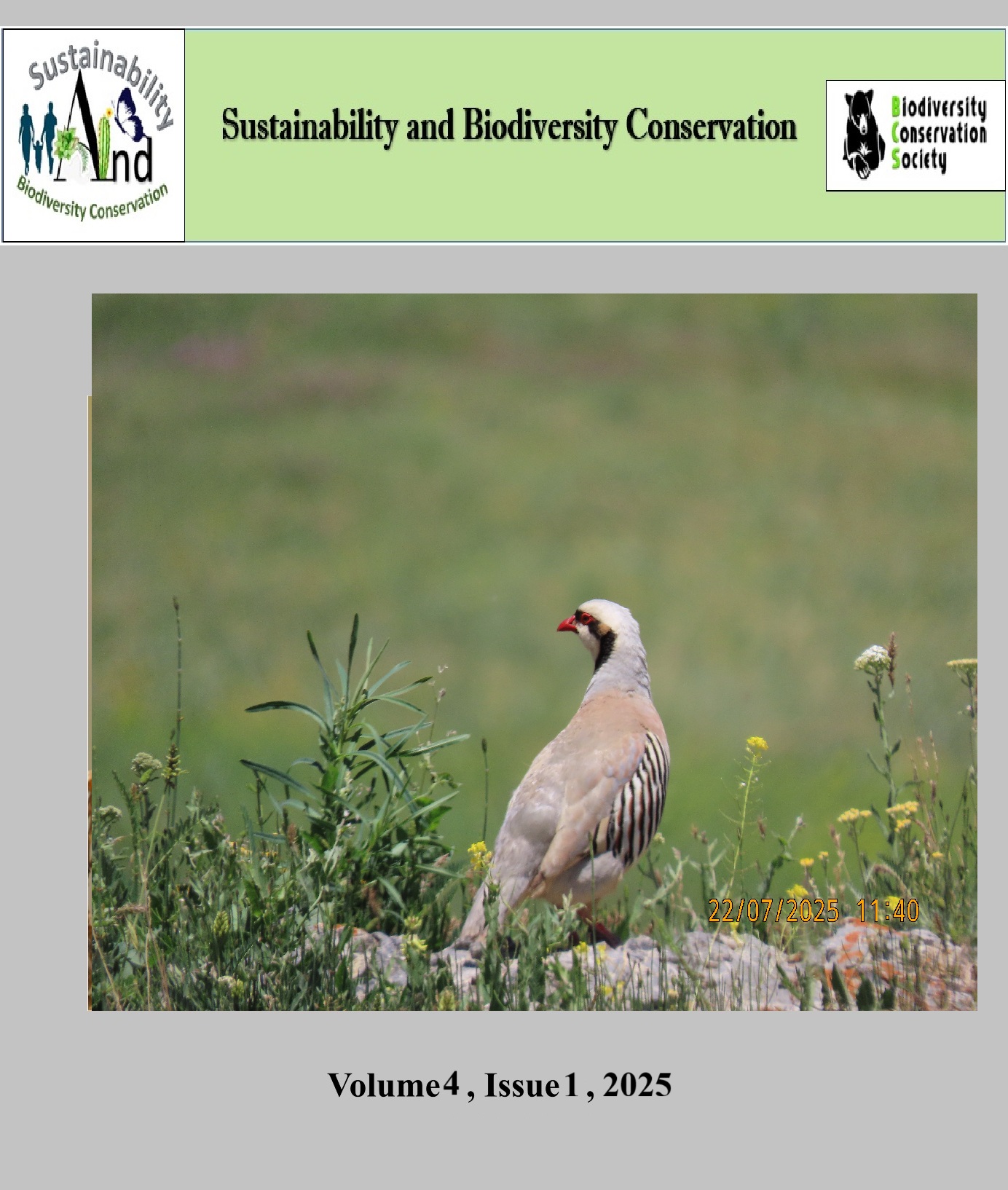The Checklist of Bird Species around the “Tillari Conservation Reserve” in Maharashtra, India
DOI:
https://doi.org/10.5281/zenodo.14968108Keywords:
Avifaunal Diversity, Tillari Conservation Reserve, Western Ghats, Bird ChecklistAbstract
In the intricate tapestry of nature, birds play a vital role, acting as key indicators of ecosystem health and contributing significantly to ecological processes. This study delves into the avifaunal diversity of the Tillari Conservation Reserve, located in the Western Ghats—a global biodiversity hotspot facing increasing threats to its unique ecosystems. The diverse landscape, ranging from reserved forests on slopes to privately owned lowlands, provides a rich backdrop for avian exploration. Our study, conducted from November 2021 to April 2022, the findings reveal a rich tapestry of avian life, with 103 distinct bird species identified across 19 orders and 51 families. Passeriformes dominate, constituting 42.72% of the recorded species, followed by significant orders such as Accipitriformes, Pelecaniformes, and Coraciiformes. Families like Accipitridae, Ardeidae, and Muscicapidae stand out, showcasing the diversity within the avian community. Noteworthy is the revelation that a majority (91%) of observed species are categorized as 'least concerned' according to IUCN. However, a few species, including the while Great Hornbill, Malabar Grey Hornbill, and River Tern are classified as 'vulnerable' (3%) based on IUCN. The study sheds light on the unique avian inhabitants of this conservation reserve, providing baseline information crucial for future conservation initiatives in the Western Ghats. This research serves as a testament to the interconnectedness of diverse species in this critical ecological corridor, urging further exploration and preservation efforts in this globally significant region.
References
Ali, S. (1949). Indian Hill Birds by Ali s. Pahar. https://pahar.in/pahar/1949-indian-hill-birds-by-ali-s-pdf/
Ali, S., & Ripley, S. D. (1995). A Pictorial Guide to the Birds of the Indian Subcontinent. Bombay Natural History Society.
Amat, J. A., & Green, A. J. (2010). Waterbirds as Bioindicators of Environmental Conditions. In C. Hurford, M. Schneider, & I. Cowx (Eds.), Conservation Monitoring in Freshwater Habitats: A Practical Guide and Case Studies (pp. 45–52). Springer Netherlands. https://doi.org/10.1007/978-1-4020-9278-7_5
Bensizerara, D., Chenchouni, H., Si Bachir, A., & Houhamdi, M. (2013). Ecological Status Interactions for Assessing Bird Diversity in Relation to a Heterogeneous Landscape Structure. Avian Biology Research, 6, 67–77. https://doi.org/10.3184/175815513X13577344603957
Daniels, R. J. R., Hegde, M., & Gadgil, M. (1990). Birds of the man-made ecosystems: The plantations. Proceedings: Animal Sciences, 99(1), 79–89. https://doi.org/10.1007/BF03186376
Edison, D., Abragam, A., & Vijila, S. (2016). Terrestrial avifauna of St. John’s College campus, Tirunelveli District, Tamilnadu, India. https://www.academia.edu/22832635/Terrestrial_avifauna_of_St_John_s_College_campus_Tirunelveli_District_Tamilnadu_India
Gregory, R. D., Noble, D., Field, R., Marchant, J., Raven, M., & Gibbons, D. W. (2003). Using birds as indicators of biodiversity. ORNIS HUNGARICA.
Grimmett, R., Inskipp, C., & Inskipp, T. (2011). Birds of the Indian Subcontinent. Christopher Helm.
Hariharan, P., & Raman, T. R. S. (2022). Active restoration fosters better recovery of tropical rainforest birds than natural regeneration in degraded forest fragments. Journal of Applied Ecology, 59(1), 274–285. https://doi.org/10.1111/1365-2664.14052
Hiragond, N., & Lokhande, A. S. (2016). Avifauna Diversity of Malatwadi and its Vicinity, Chandgad Tashil, Kolhapur, Southern Maharashtra. International Journal of Recent Scientific Research. https://www.academia.edu/43447653
Hladik, M. (1993). Fruits of the rain forest and taste perception as a result of evolutionary interactions.
Munje, A., & Kumar, A. (2022). Bird community structure in a mixed forest-production landscape in the northern Western Ghats, India (p. 2022.04.04.486917). bioRxiv. https://doi.org/10.1101/2022.04.04.486917
Myers, N., Mittermeier, R. A., Mittermeier, C. G., da Fonseca, G. A., & Kent, J. (2000). Biodiversity hotspots for conservation priorities. Nature, 403(6772), 853–858. https://doi.org/10.1038/35002501
Olson, D., & Dinerstein, E. (1998). The Global 200: A Representation Approach to Conserving the Earth’s Most Biologically Valuable Ecoregions. Conservation Biology, 12, 502–515. https://doi.org/10.1046/j.1523-1739.1998.012003502.x
Pawar, P., & Sadekar, V. (2023). The foothills of the northern Western Ghats serve as a potential stronghold for threatened hornbill species. 18, 146–149.
Punjabi, G. A., & Rao, M. K. (2017). Large herbivore populations outside protected areas in the human-dominated Western Ghats, India. Mammalian Biology, 87, 27–35. https://doi.org/10.1016/j.mambio.2017.05.004
Raman, T. R. S. (2006). Effects of Habitat Structure and Adjacent Habitats on Birds in Tropical Rainforest Fragments and Shaded Plantations in the Western Ghats, India. Biodiversity & Conservation, 15(4), 1577–1607. https://doi.org/10.1007/s10531-005-2352-5
Downloads
Published
How to Cite
Issue
Section
License
Copyright (c) 2025 Sustainability and Biodiversity Conservation

This work is licensed under a Creative Commons Attribution 4.0 International License.


